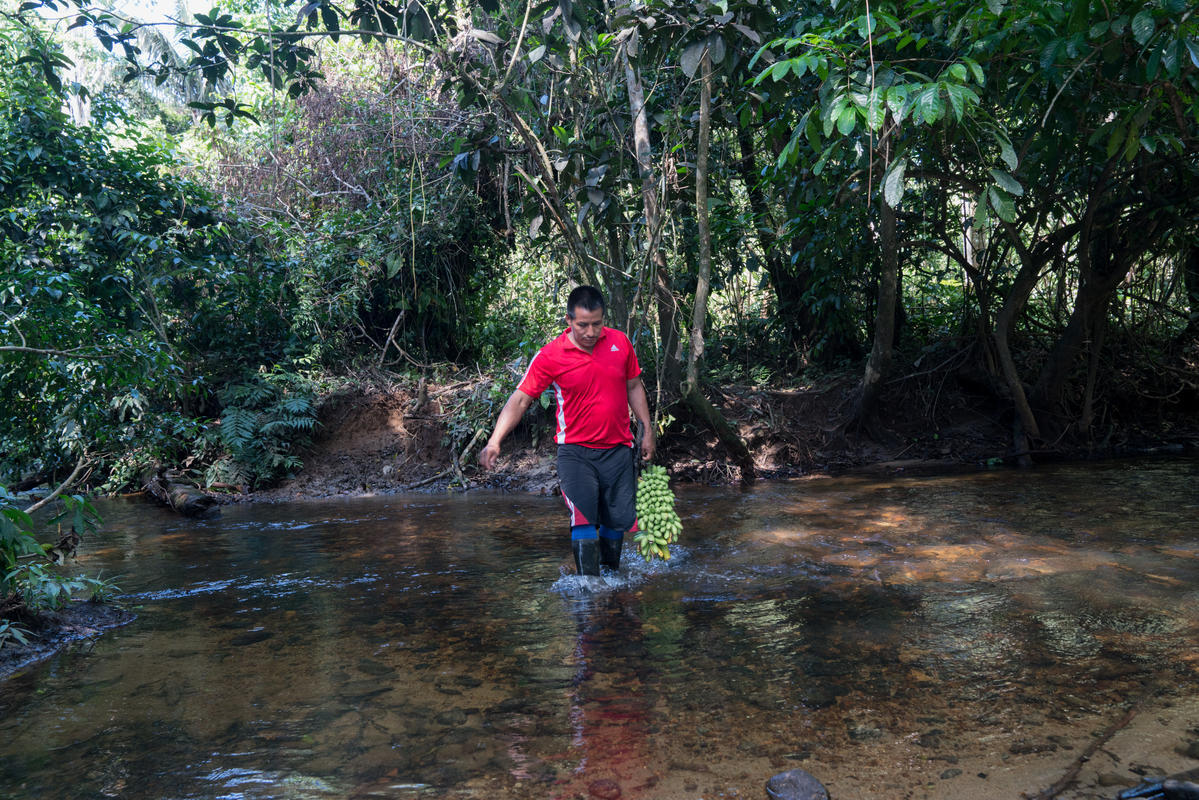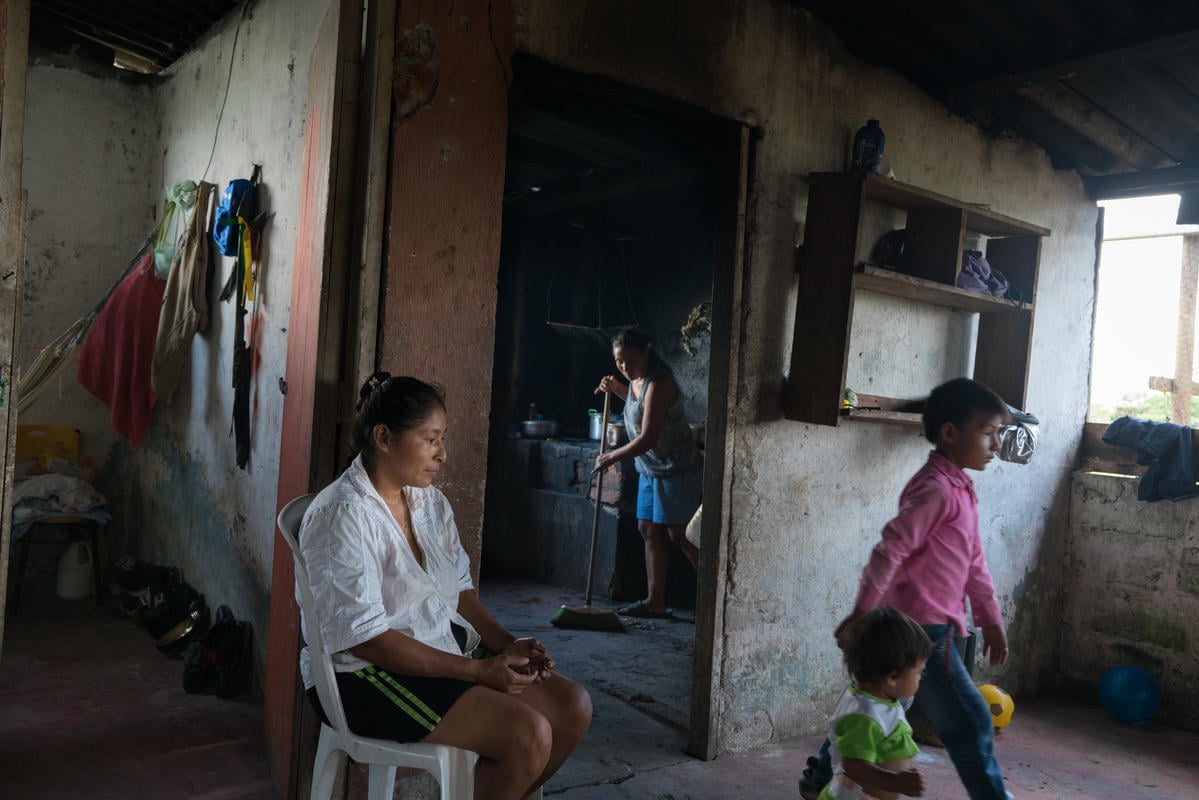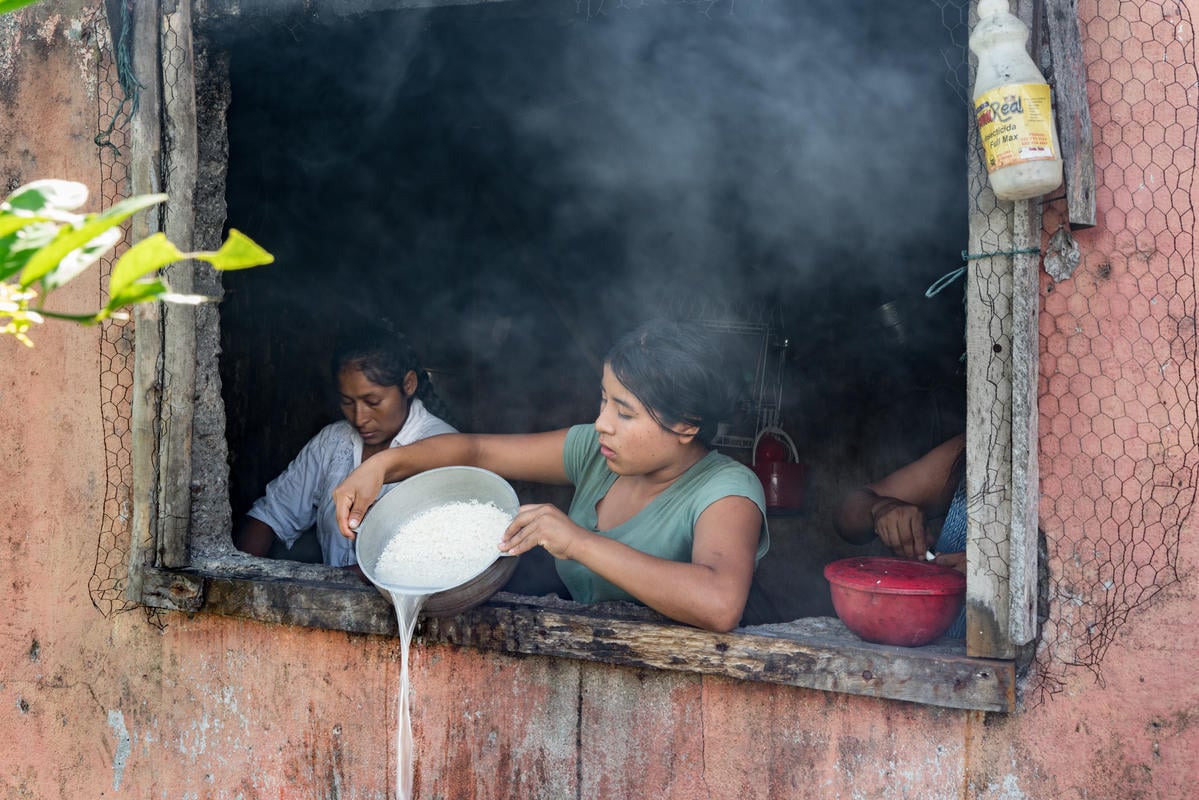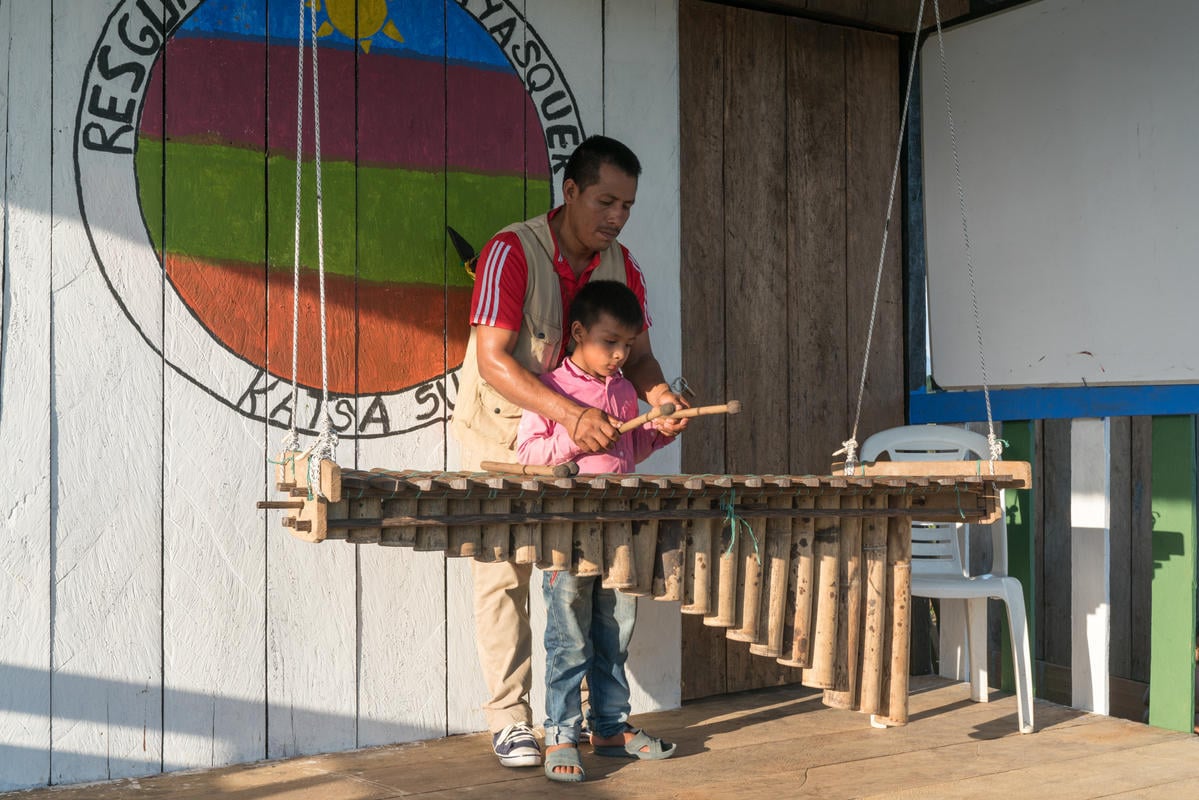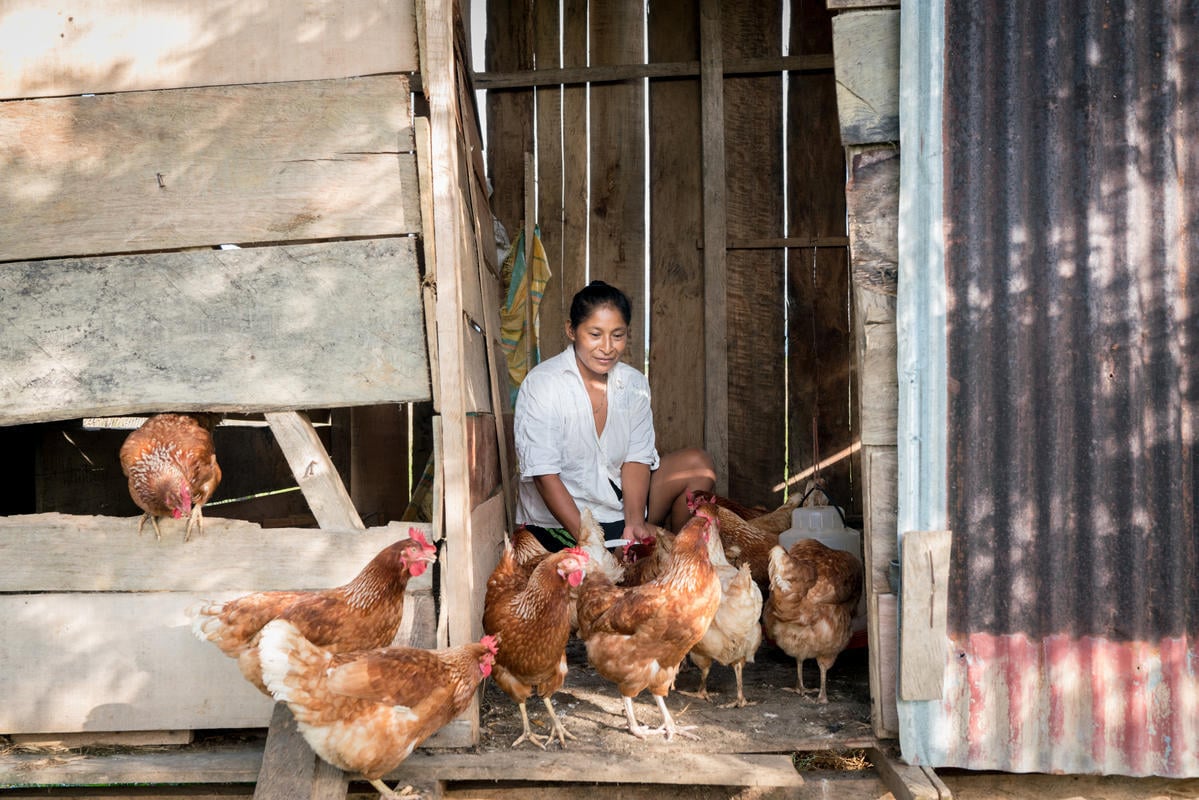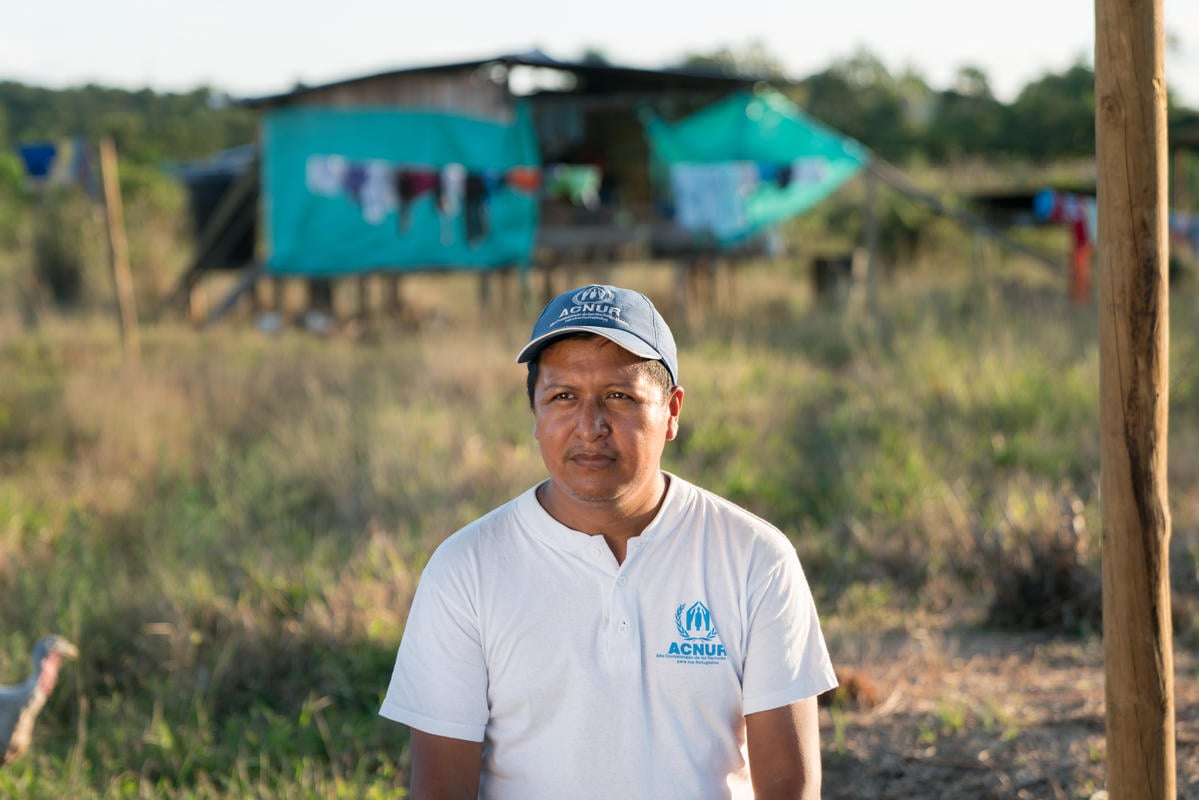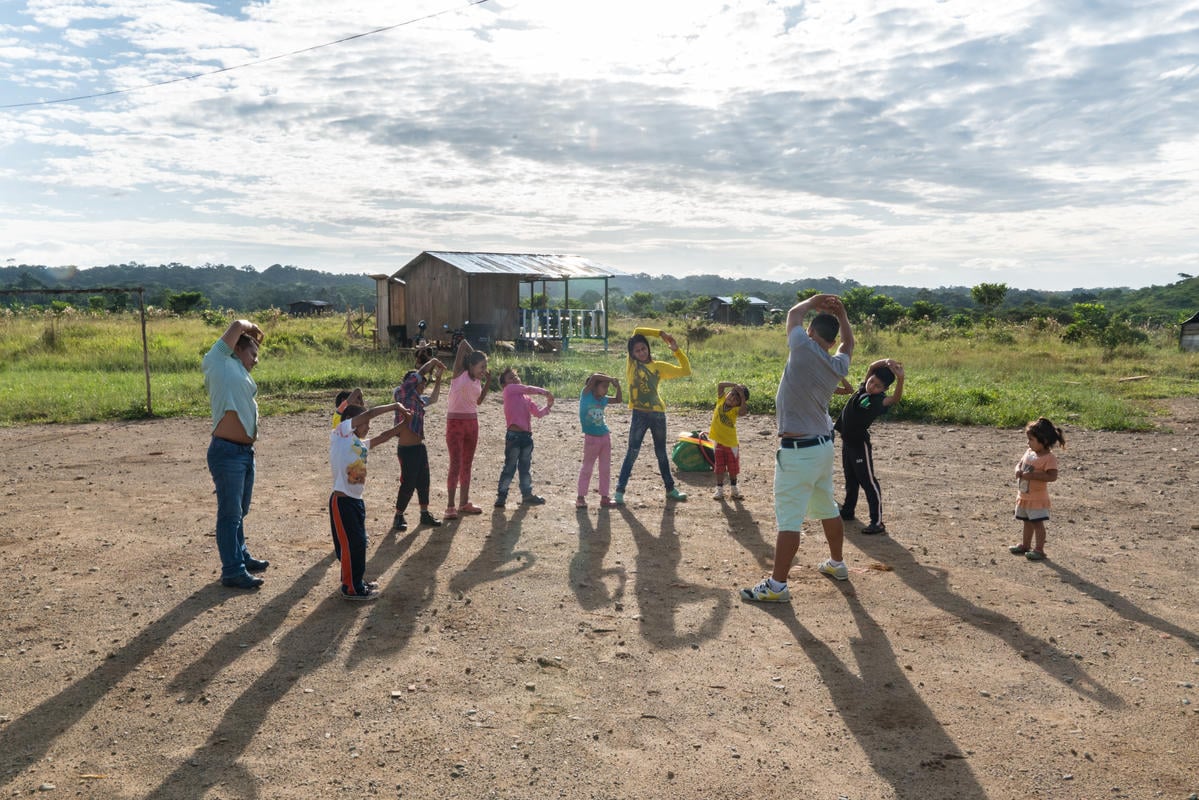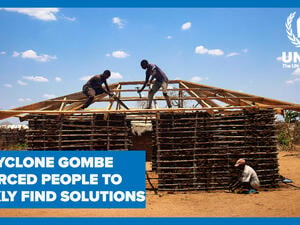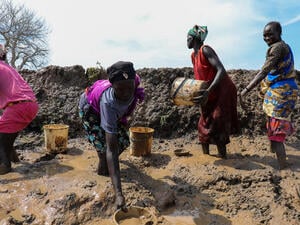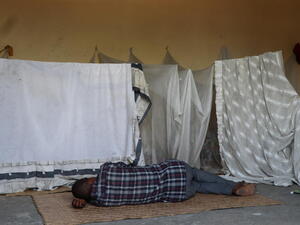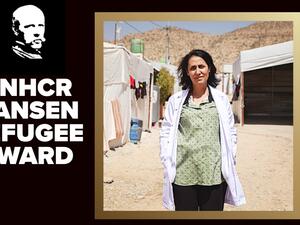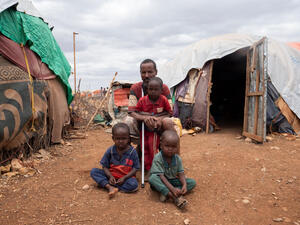Driven from their lands, Colombia's Awá struggle to survive
Driven from their lands, Colombia's Awá struggle to survive
Back on their ancestral lands in the Colombian rainforest, Awá Mayasquer elder Cuasaluzan Nastacuas hunted, raised livestock and planted food crops.
But uprooted by the country’s bloody armed conflict, the 63-year-old now gets up each day at three in the morning to find work as a day labourer in a provincial city half-an-hour away by bus.
“When we lived in the jungle … we worked on the land, planting yucca and raising pigs. We never worked in the city before being displaced,” his son Armando Cuasulzan Pai explains.
Indigenous peoples like the Awá Mayasquer are among those most impacted by more than five decades of armed conflict in Colombia that has displaced more than 7.6 million people both within the country and beyond its borders.
The community, whose lands are in Nariño province in southwest Colombia, were caught in the crossfire between government forces and left-wing Revolutionary Armed Forces of Colombia, or FARC.
While a peace agreement in 2016 ended hostilities, the painful memory of rebel massacres that killed at least 11 in 2009, and the fear of landmines, make the community reluctant to return to their traditional home.
“The elders don’t even want to consider going back. They say they’d rather die here than be forced to go back. We decided to stay here and asked for relocation, for security reasons,” says Armando, who the leader of his community.
One of the most ethnically diverse countries in the world, Colombia is home to 102 different indigenous groups. But up to a third, including the Awá, are at risk of extinction because of the conflict and related displacement, according to Colombia’s Constitutional Court.
“You have to understand that their life is based around the group,” says Harold Juajibioy, a UNHCR staffer who works with the Awá. “When the armed conflict arrives in their lands the first thing that suffers is their sense of unity. It isn’t just a harming an individual, but harming a community.”
In 2011 the Constitutional Court called for the adoption of precautionary measures to protect the group. And in April last year – after six years of internal displacement – 17 displaced Awá families were given 239 hectares of land by the government in the municipality of Villagarzon, in southern Colombia’s Putumayo region, to start over.
The resettled families, the first to be relocated there by the government, have gradually built elevated wooden shacks to live in. But their new homes lack running water, flushing toilets and electricity, and have black plastic trash bags covering most of the roofs to protect them from the heavy wet season rains.
“What does this Indigenous community need? Not just territory, we need housing, energy, water, running water in order to live, and livelihood projects so we can grow food. The government has really neglected us,” says Armando.
"We need housing, energy, water, running water ... and livelihood projects so we can grow food."
To get back on their feet, Armando says the community needs financial support to sow food crops and purchase cattle. “That is why it has been hard for us here. Some days we eat, other days we get by on a just a little coffee. That’s the situation we are living in,” he says.
While living conditions are hard, displacement for indigenous communities means more than just a loss of land. “Many times, out of fear or as a way to protect themselves, they don’t use their native language outside of their land,” says Juajibioy. “Because of discrimination in urban places, those cultural traditions, customs and rituals usually begin to disappear or deteriorate,” he adds.
While most of the homes in Villagarzon are not finished, one small but well-built wooden house stands in the middle of these lands. It is their cultural centre – built by the UN Refugee Agency – decorated and painted with the emblem of their planned indigenous reservation.
A marimba, a percussion instrument built from bamboo, has been placed in the centre for the community to play. “We brought the marimba from Nariño,” says Armando, “The elders taught me to play it. And now I teach my sons, so that our culture can continue.”
The sun is setting and Ignacio Cuasaluzan has just come back from Mocoa, 18 kilometres Awáy. He made 25 thousand pesos in a long day’s work, the equivalent of US$8. It is just enough to pay for 12 kilos of rice, which he will use to feed some members of his family. He joins his children to listen as Armando plays the marimba.
“We lived connected to nature,” he says wistfully. “We hear the birds sing and our marimba music complements the birdsong.”

